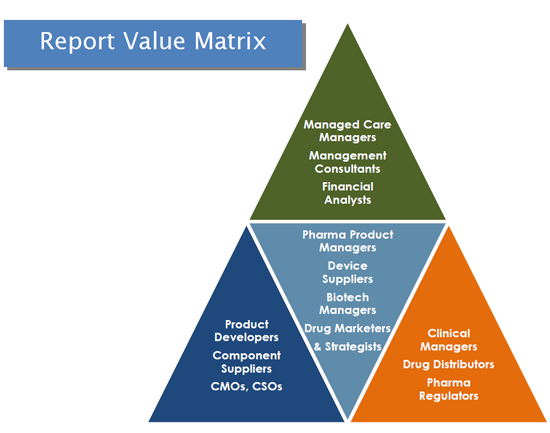PUBLISHER: Greystone Research Associates | PRODUCT CODE: 1783024

PUBLISHER: Greystone Research Associates | PRODUCT CODE: 1783024
Therapeutic Biological Drugs for Injectable Delivery - Technologies, Therapeutics, Markets, Strategies & Forecasts
"Therapeutic Biological Drugs for Injectable Delivery: Devices, Therapeutics, Markets, Strategies and Forecasts" is a comprehensive evaluation and analysis of the technology, products and participants providing the driving force behind this evolving segment of the healthcare sector. The study is designed to provide drug company decision makers, drug delivery developers, device designers, healthcare marketers, and supply chain participants with a detailed understanding of the economics, technologies, disease segments, and commercial opportunities for injection devices for administering biologicals. Provider organization business managers, healthcare administrators and investors will also benefit from this study.
Device Engineering Providing New Platforms for Biological Drug Delivery
Biological drugs as a class continue to outpace all other NCEs in development pipelines and clinical trials. Because biological drugs most often target chronic conditions, dosing strategies and treatment protocols must be developed for long-term use, often for self-administration by patients who may have limitations directly related to their condition. The powerful physiological effects of antibodies, hormones, enzymes and other biological drugs also increase the need for safety and adherence. Cooperation between device designers and drug developers is occurring much earlier in the drug development cycle, allowing device designs in many cases to be tailored to the bioavailability targets and pharmacokinetic profiles of specific drug therapies. New injectable delivery device designs currently being developed will create new opportunities for alternative injection methods. Partnerships between device suppliers and pharmaceutical companies will foster market acceptance of new injection devices for a host of new therapies such as therapeutic vaccines, DNA-based drugs, and protein-derived biologics.

What You Will Learn:
- What are the product and user requirements that drive the biological drug-device selection process?
- What are the essential design factors, technologies and market development issues for injection devices capable of administering biological dugs?
- What is the impact of development-stage biological manufacturing process changes on device go-to-market readiness and how has it changed in recent years?
- How do device selection decisions align across biological drug classes? Therapeutic targets? Market segments?
- What is the impact of drug-device dependencies on pre- and post-marketing product life cycle management?
- What are the significant economic, technology, and regulatory factors affecting the market for biological drug injection devices?
Methodology:
Research methodology is based on primary research in the form of in-depth interviews with key market participants, technology developers, distributors, industry experts, and market influencers, a list that includes regulatory officials, industry trade groups, and materials standards organizations.
Primary data is evaluated and normalized against secondary sources including trade journal articles, technical literature, industry publications, company data sheets and published information, and statistical data from government agencies and trade associations.
Forecasts and projections of market demand and future market activity are derived using standard modeling and statistical techniques.
Table of Tables
Executive Summary
The Market Opportunity
- Unmet Patient Needs
- Biosimilars
- The Biological Drug Global Supply Chain
Biological Drug Delivery - Challenges and Limitations
- Drug Stability
- Pre- and Post-Manufacturing Engineering
- Lyophilization and Reconstitution
- Viscosities and Volumes
Drug Strategies & Therapeutic Protein Packaging
- As-Supplied Packaging
- Device Market Share
- Device Supplier Segment Activity
- Emerging Injection Devices for Biological Drugs
Injectable Biologicals - Product Analysis by Drug Class
- Cytokines
- Enzymes
- Fusion Proteins
- G-CSF/GM-CSF
- Hematopoietics
- Hormones
- Immune Modulators
- Insulins & GLP Analogs
- Monoclonal Antibodies
- Vaccines
Therapeutic Market Segment Analysis
- Cardiovascular
- Diabetes
- Hematology
- Immunology
- Metabolic
- Oncology
Market Factors
- Regulatory Issues
- Patient Preferences and Self-Administration
- Pre- and Post-marketing Device Evolution
- Compatibility Testing
Company Profiles




